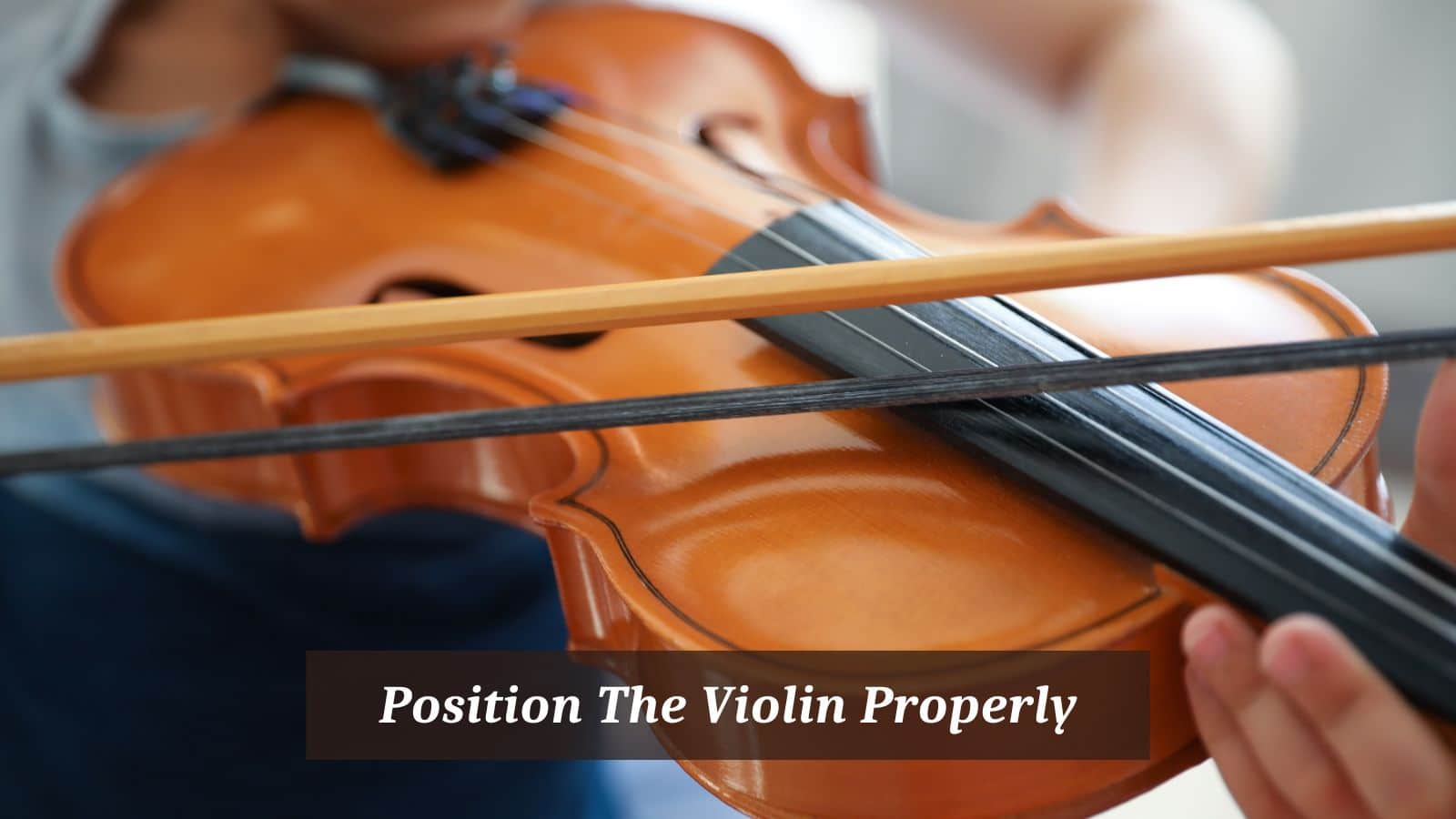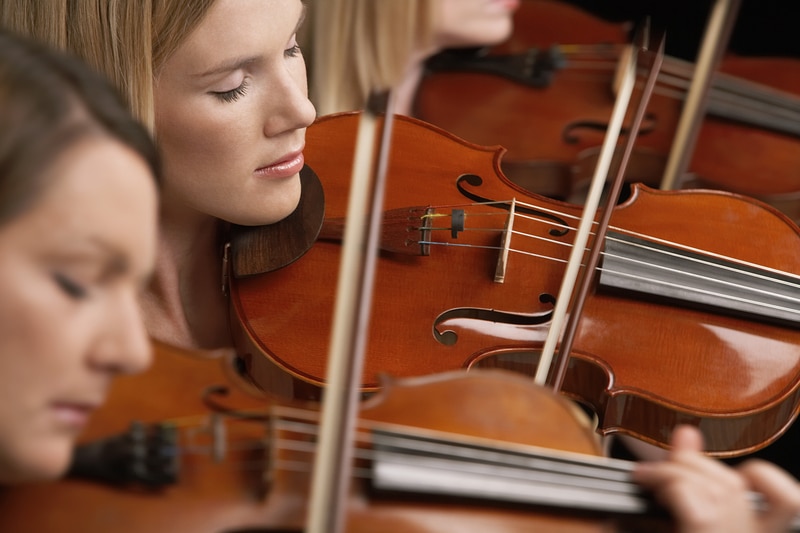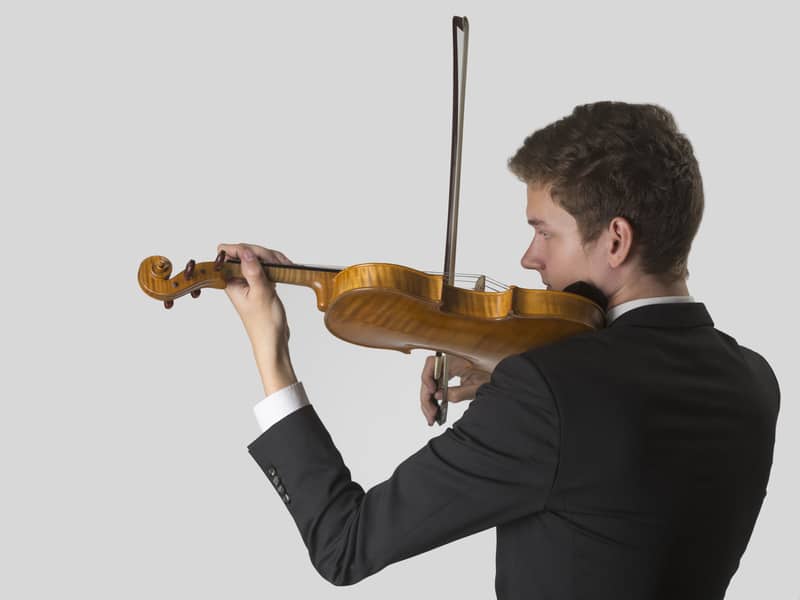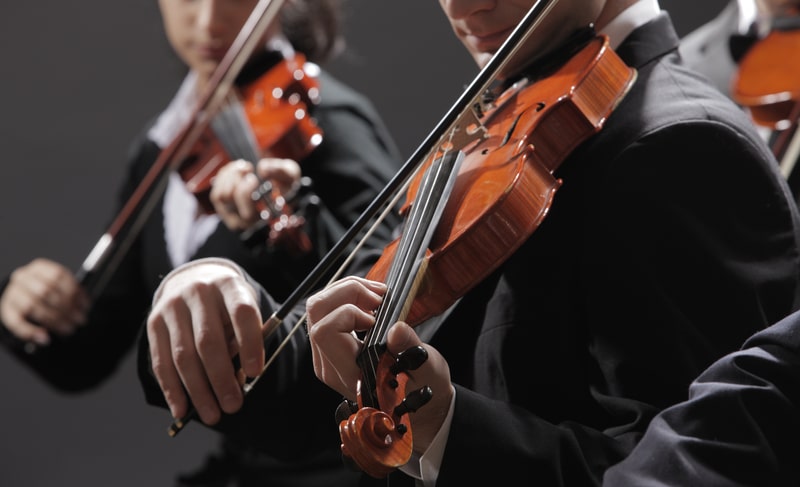
In order to play the violin in a healthy way and produce a beautiful sound, every violinist must adapt the instrument to his own body. The player must be fully relaxed and connected to the instrument, and the violin should feel like an extension of his own body.
These adjustments to posture may take more or less time, depending on the individual, but if ignored, they may lead to serious health problems. To help you out, we prepared this guide, which contains all the necessary information concerning the correct posture for violin playing.
Position The Violin Properly
Placement of the violin
The back of the violin should lie comfortably between the collarbone and the shoulder, usually in a horizontal way, running parallel to the floor.
Note that, as a rule, the violin should always be placed on the left shoulder and never on the right one. This rule must be especially observed by players who want to join an orchestra.
Head
The head must be completely relaxed and aligned with the spine. The head must be slightly turned to the left side and fall gently on the violin, not squeezing the violin.
The player should not feel any extra tension in the muscles of the neck when playing; otherwise, this tension can be transferred to the arms and fingers.
If the head is not completely relaxed, and this can happen for a number of reasons, the player will probably feel a strong pain in the neck because of the constant burden on its muscles.
Shoulders
A neutral and natural position of the shoulders is required. The player must not force them forward, backward, or, most commonly, upward.
Although it looks like a simple fix, many students carry a wrong shoulder position for years, as this can either be due to a lack of attention or a wrong combination of chin and shoulder rests. Bringing the shoulder into an unnatural position will just cause pain and produce extra tension.
Back
Our spine has some natural curves that occur at the neck, midback, and lowback. This means that the spine should not be kept straight but rather relaxed. The spine should also not tilt to the sides but be completely perpendicular to the floor.
Because the violin is placed on the left side of the body, some players choose to either bring the upper side of the spine to the left side or compensate for this apparent lack of balance by bringing it to the right.
Knees
The lower part of the body gives stability and support to its upper counterpart. Although not apparently related to the violin, it plays an important role during the performance.
If knees are forced backwards, for example, the body loses stability, and the player will feel uncomfortable while playing the instrument. The knees should be flexible to compensate for any momentarily imbalance that may happen when the violinist is playing and moving freely.
Arms
The player must be careful not to exaggerate the rotation of the arms and forearms when playing the violin.
The arms must have the freedom to move freely without any excessive tension so that the player can reach all the notes of the violin with ease, producing a beautiful and stable sound.
Hands and fingers
The left hand supports the violin without any extra tension. The violinist must not squeeze the instrument but let the arms be free to work properly.
The fingers of the left hand must be in a completely round shape, ready to work as the hammers of a piano, moving in a flexible and organic way. The thumb stands alone in the back of the neck, but is always relaxed.
Holding the bow
The thumb must be placed near the frog, under the stick, whereas the other fingers fall naturally above the stick. There is some discussion about the exact placement of each finger, but in general, the fingers must be a little spread apart from each other.
Adjusting the shoulder rest
A good shoulder rest must contain a pad that mimics the contour of the collarbone of the player and also offer as many possibilities of adjustment as possible. It is placed under the violin, and one of its main functions is to help fill the gap that exists between the chin and the shoulder.
To help with that, most shoulder rests allow for height adjustments through a system of screws. If the gap is not properly filled, the violinist will naturally raise his shoulder or tilt his head in an attempt to hold the violin more firmly.
Choosing the chin rest
One of the functions of the chin rest is, as the name implies, to provide good and comfortable support for the chin. It is also used as a means of filling the gap between the chin and the shoulder, giving more comfort to the player.
Among the most common models on the market are the Guarneri, Teka, Flesch, and Dresden. We remind you that a good combination of chin and shoulder rests is essential for the comfort and health of the player.
Most common mistakes
There are some mistakes that are more frequent among beginners and that should be avoided at all costs:
- Spine disalignment
- Excessive tension
- High shoulders
- Flat fingers
- Wrong shoulder and/or chin rest
A bad posture will usually cause health problems that can become chronic if not treated early.
Health problems
Among the most common injuries in musicians due to bad posture are overuse lesions. Pain, burning feelings, exhaustion, or heavy limbs are signs that the body is not being correctly used. If these symptoms appear, the musician should immediately understand the causes.
Violinists should also be careful to maintain good posture so as not to develop spine curvature disorders such as kyphosis or scoliosis.
Conclusion
Knowing how to position the violin well is not a hard task and enhances the player’s qualities. In order to achieve that, with the guidance of a good teacher, special attention must be given to the alignment and relaxation of the body.
When all these things are observed, the sound produced by the player becomes more beautiful and will definitely be noticed by the audiences.



